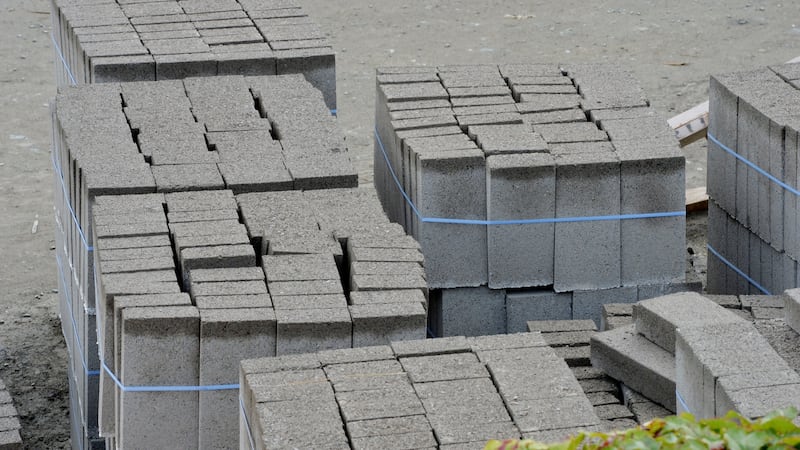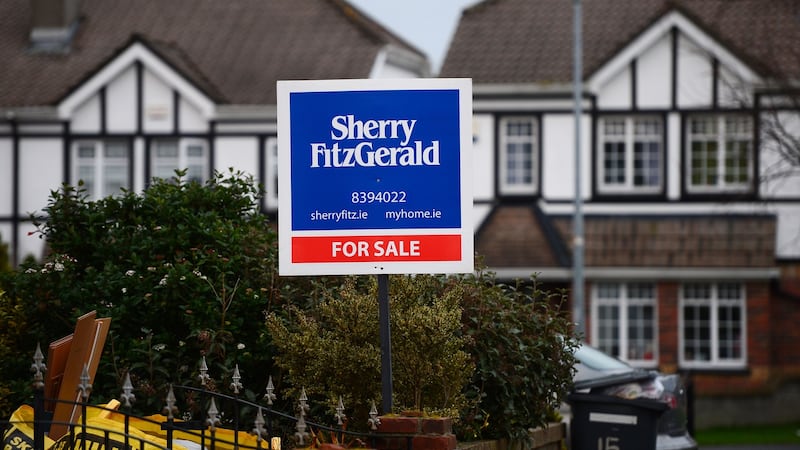The drawdown of mortgages by borrowers, and approvals for new mortgages, are running ahead of last year’s levels.
But the figures for June have fallen back significantly from May, leading forecasterss to downgrade their estimates for the full year.
With other signs of slowing growth in some parts of the housing construction market and house prices now stalling, what is going on?
1. The topline data
On the face of it, the latest figures from the Banking and Payments Federation of Ireland on mortgage drawdowns and approvals are quite strong. A total of 10,157 mortgages valued at €2.250 billion were drawn down by borrowers during the second quarter of this year, an increase of 8.8 per cent in volume and 11.7 per cent in value on the same period last year.There was also a strong increase compared to the previous quarter.
This increase in the total amount of money being borrowed continues the recovery from the extraordinary drying up in credit during the economic bust, when borrowers didn’t want to borrow and lenders didn’t want to lend.
The mortgage drawdown data tell the story of boom to bust and – some of the way – back, with the amount extended in home mortgages peaking at over €40 billion in 2006, falling to €2.5 billion in 2013 and totalling over €9.1 billion over the last twelve months.
There may be many concerns about the housing market – but we are not back in the territory of a debt-fuelled bubble.
The latest figures have led forecasts to downgrade their estimates of mortgage borrowing for the full year – and for 2020. Lending is growing, but not as fast as had been expected, given the drive to build houses.
At Investec, Owen Callan said that the 12 month running total of €9.14 billion was below expectations of a €10.1 billion total for 2019. Looking at separate data for mortgage approvals, meanwhile, shows a 12-month running total of €10.6 billion, compared to Investec's full year forecast of €11.65 billion.
The brokers have revised down their full-year drawdown forecast to €9.75 billion and their forecast for approvals to €11 billion. Davy stockbrokers says it will reduce its new lending forecast for this year by 2 per cent to €9.6 billion.
In making these adjustments, and also trimming back their forecasts for 2020, brokers are also watching data for prices, house completion and planning permissions which are also showing signs of slowing growth.

2. The breakdown
First-time buyers have shown the strongest growth in terms of loan drawdowns , with a 10.8 per cent rise in the number of loans to this group in the second quarter of 2019 compared to the same period last year.
Meanwhile the value of mortgages drawdowns for this group were up almost 16 per cent. The average value of a mortgage for first-time buyers rose by 4 per cent – indicating that this group continues to pay slightly higher prices.
Drawdowns by mover purchasers are growing at a slower annual rate of 6 per cent in the number of loans.
Notably, the value of loans extended to this group also rose by 6 per cent – so the average size of a loan did not rise. So while mortgage lending does not represent the entire market for second-hand homes, this is powerful further evidence of the stalling of prices in that part of the market.
Affordability – and the Central Bank rules limiting lending based on a borrower's income – is clearly now a key constraint. That this was on the cards has been clear for some time, as house prices in Dublin in particular moved ahead of affordable levels for those on even relatively good incomes.
An average house price in Dublin of €380,000 would – assuming a 10 per cent deposit – require an income of €98,000 to meet the 3.5 times borrowing rule sent by the Central Bank.
As well as the modest growth in mover purchaser loan drawdowns , the data for mortgage approvals also show a weaker trend in June.
While this may in part be due to seasonal factors, the drop of 9 per cent in both the number and value of mortgages approved in June, compared to May, is striking, even if the total remains almost 5 per cent ahead of June 2108.
The number of first-time buyer approvals fell 7.3 per cent month-on-month. For mover purchasers, the number of loans was down 5 per cent month-on- month and was 1.3 per cent below the same month last year.
These approval trends are a key reason why brokers have cut their estimates for the full year.

3. The issues
A string of indicators have shown some slowdown in growth in the housing market in recent months. Slowing price growth – with some surveys showing falling prices in parts of the second-hand market in Dublin – indicate that prices had moved ahead of affordability.
The concern from a policy point of view is that this trend – and a fall-off in sales in parts of the market – is leading to a slowdown in house building. Obviously increasing the supply of housing is a key national goal both to provide more homes for those wanting to buy and to take some pressure off the rental market.
So far the data suggest a slowdown in the rate of building growth – even if activity is still on the rise overall. Planning applications were up 18 per cent year on year in the first quarter, though this was half the growth rate one year earlier. Likewise completions in the first quarter were running 25 per cent ahead versus 40 per cent a year earlier.
The slowdown in these indicators “ is likely due to Brexit, slower house price inflation and uncertainty regarding whether the Help-to-Buy scheme will be extended beyond the end of this year,” according a a commentary by stockbrokers Davy.
In assessing the data, Goodbody Stockbrokers notes that mortgage drawdowns on new homes increased by just 2 per cent in volume and 5 per cent in value in the first quarter. This represents a big slowdown from the 20 per cent plus growth rates seen in 2018.
And there are signs that housing supply is affected by these wider trends. Overall, Goodbodys latest figures estimate that there were just 4,900 unites completed in Ireland in the second quarter of the year, up 11 per cent on an annual basis. This is the slowest rate of growth since the end of 2013 and the broker has cut its completions forecast for the full year to 21,000.
The figures are even more striking for Dublin where Goodbody estimate a 17 per cent annual fall in completions in the second quarter, with output in the first half of the year flat on 2018.” We believe this reflects the slower sales trends in the capital relative to completions than the previous quarter,” it said.
The completion trend is reflecting sales, with the data showing an 8 per cent fall in new home sales in the first half of the year in Dublin, but a sharp 21 per cent drop in sales of houses costing over €500,000.
Affordability is again the key, with house prices having run ahead of earnings and this is leading to a big fall in properties shifting at the higher end of the Dublin market.
Meanwhile sales continue to grow outside Dublin – up 7 per cent in the first six months on the Goodbody data, with strong growth in the €325,000 to €400,000 bracket. And house supply continues to soar in the commuter counties of Meath,Wicklow and Kildare, were new supply is running 40 per cent plus up on last year. These countries accounted for 27 per cent of completions in the first quarter, even though they have just 15 per cent of the population.
The trend to commuter sprawl continues, even though this is directly contrary to Government policy of having people live closer to where they work. For the moment, many people simply can’t afford to buy a house in Dublin.
If these trends continue into the Autumn, expect a major debate on factors affecting demand – including the Central Bank rules and the Help-to-Buy scheme – as well as the thorny issues affecting and limiting supply.











